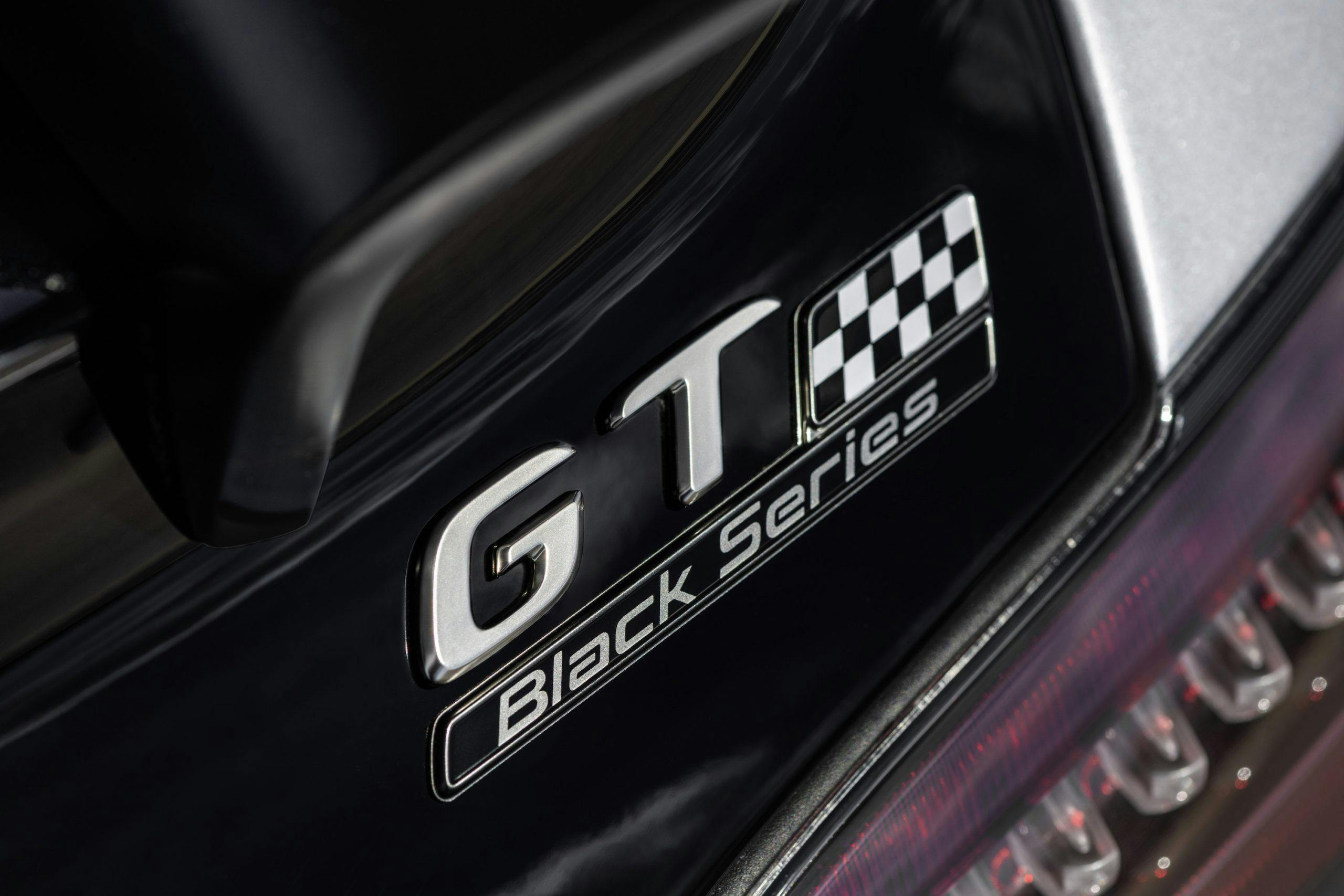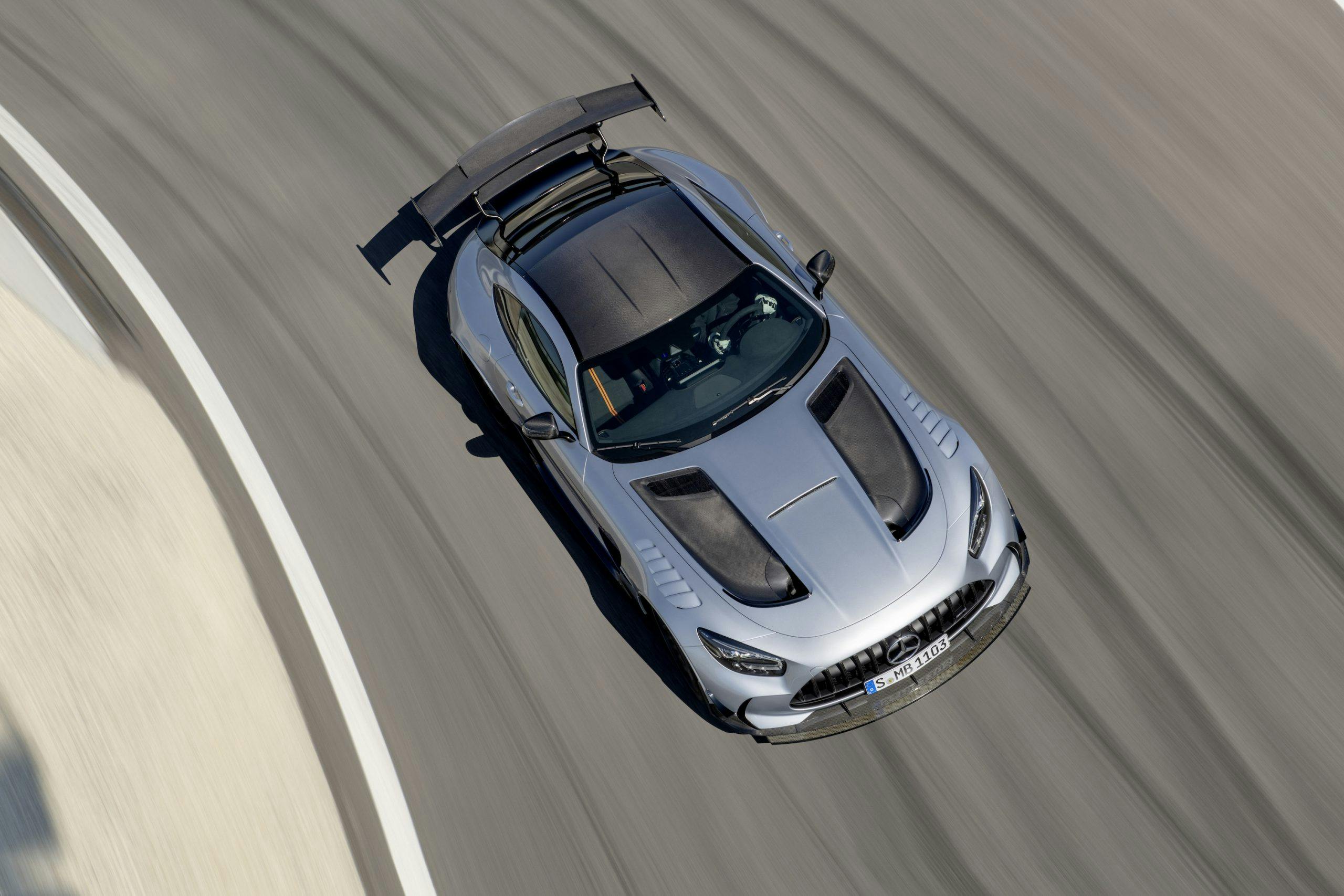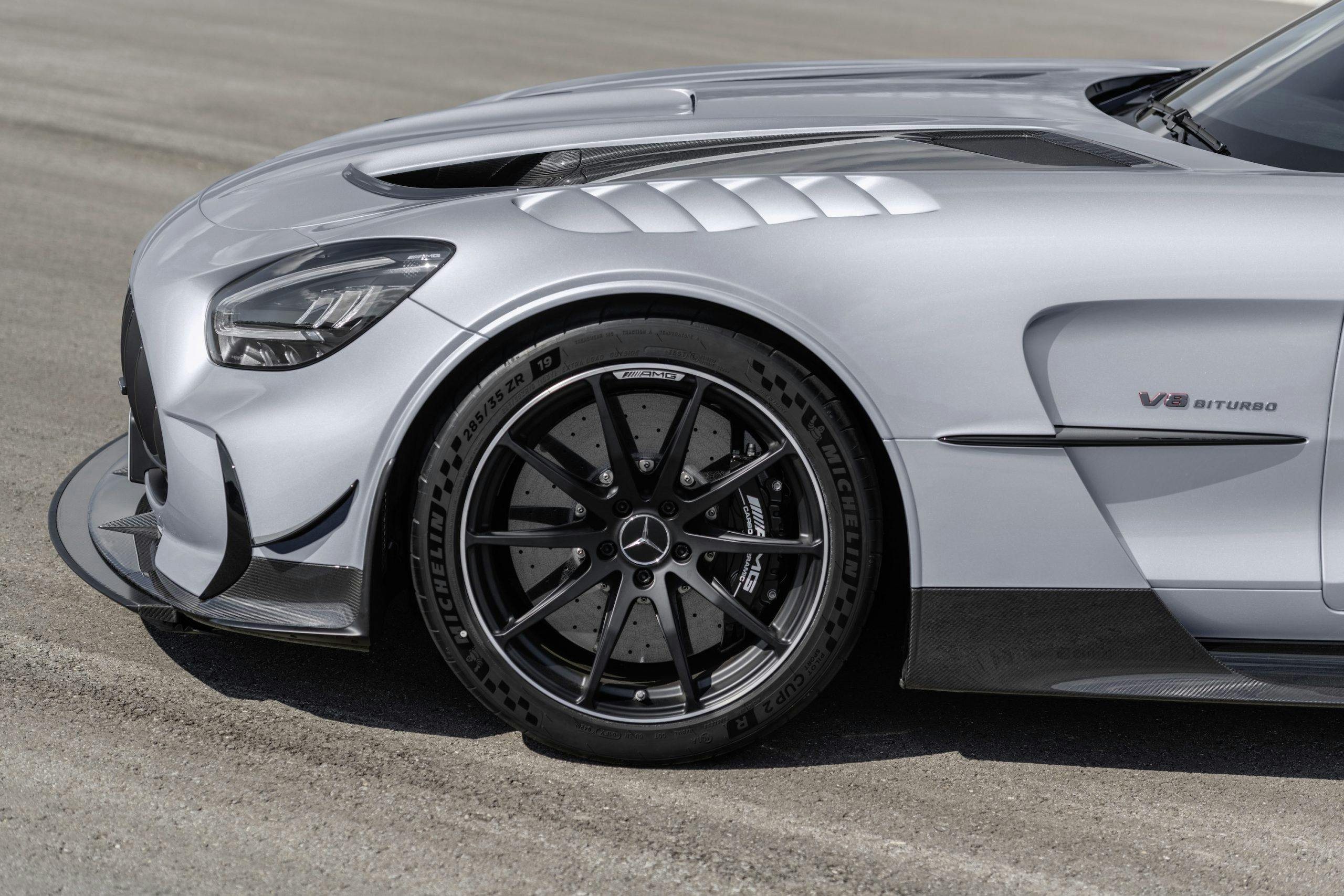Media | Articles
The Mercedes-AMG GT Black Series boasts more wing and horsepower than you can shake a schnitzel at
While the V-8-powered sports car stories on this site have tended to feature two distinctly American vehicles—hello again, C8 Corvette, and please don’t bite me, Shelby GT500—the States aren’t the only ones at that party. In fact, has anyone checked on Mercedes-AMG lately? Despite the recent flurry of butched-up crossovers, the fine folks at Affalterbach still have a soft spot for sleek, low-slung coupes belching hammers out the back. Case in point: Meet the new Mercedes-AMG GT Black Series, the nastiest, meanest looking variant yet of Mercedes’ two-door coupe.
The big change—the engine. AMG’s ubiquitous 4.0-liter twin-turbo V-8 traditionally sports a cross plane crankshaft, but here in the Black Series, AMG has opted for a flat plane crank, citing better throttle response and increased performance opportunities thanks to uniformly oscillating gas column—smart-speak for an ignition sequence that happens on each bank of cylinders in back-and-forth order. There are enough other changes to the beating heart of this car that AMG has given it a new internal code of M178 LS2, differentiating it from the more normal but still rip-your-face-off M178 brother found in the regular AMG GT models. Our first hint that this change was on the horizon came from AMG’s official twitter page, which tweeted out this cryptic message about the firing order.
The new beat is: 1 – 8 – 2 – 7 – 4 – 5 – 3 – 6. Listen to it on July, 15th. pic.twitter.com/pQ5aXCJJ7T
— Mercedes-AMG (@MercedesAMG) July 13, 2020
The turbos fitted in the hot-vee setup receive bigger compressor wheels, helping vault peak boost pressure from 19.6 psi in the AMG GT R to 24.6 psi. Combined with new camshafts and new exhaust manifolds, the changes to the engine are good for a staggering 720 horsepower at 6700–6900-rpm and 590 lb-ft of torque from 2000-rpm all the way to 6000-rpm. That sort of power propels the AMG GT Black from a standing start to 60 mph in just 3.1 seconds, and 124 mph in under nine seconds. Top speed is a claimed 202 mph.
With an engine juiced to high heaven like that, the AMG GT’s seven-speed dual-clutch transaxle needed some reworking to avoid shredding its innards. Launch control—AMG calls it Race Start—is tweaked for the new car, allowing more violent launches from higher revs with a more sensitive wheel slip control. There’s an upgraded cooling circuit for the gearbox, as well as slightly modified gear ratios.
Marketplace
Buy and sell classics with confidence
The torque tube—a structural component of the AMG GT chassis that connects the entire driveline and helps bolster overall rigidity—is made of carbon fiber, weighing just 30.6 pounds, a 40 percent reduction over the aluminum torque tube in the softer AMG GT models.

Not to be outdone by the engine team, the folks in charge of aerodynamics on the AMG GT Black went equally as wild, drawing heavily from insights gleaned from AMG’s GT3 and GT4 racing programs. It starts up front with the car’s gaping maw, opened as wide as possible to swallow air by the truckload. Gone are the two additional air inlets on the outsides of the front—there’s one (giant) inlet to rule them all now. The carbon-fiber front splitter has two manually adjustable settings—street and race (kill and devour, in our heads), with the latter being exclusively for use on closed race circuits. Depending on the speed, the splitter is pulled even lower to the ground, accelerating the air under the body of the car and sucking the whole thing down closer to the tarmac, a boon for steering feel.
Atop the vast hood of the car are two massive exhaust air openings, a direct derivation of the hood design used in Mercedes’ motorsports programs. It helps channel warm air out the top of the hood, away from the engine and around the sides of the car. Like most of the other aero elements, the whole hood is carbon-fiber.
Out back, the new rear wing is impossible to miss. It’s a two-part design, meant to play in concert with both the air flowing from the front of the car, as well as the air being hurled out the rear diffuser below. Both flaps are carbon fiber, as are the supports thrusting the wings up into the airflow. In the upper blade, there’s an electronically-adjusted flap, able to tilt up to 20 degrees, depending on the driving situation. Four different “activation strategies” are available, depending on your selected drive mode.
A high-performance ceramic brake system handles stopping duties, while a motorsport-derived, double-wishbone suspension offers performance components like continuously variable, adaptive dampers and adjustable spring pre-load. It’s all adjusted via the AMG Dynamic Select drive modes—Comfort, Sport, and Sport-Plus, in ascending order of extremity. Forged alloy wheels wear specially-developed Michelin Pilot Sport Cup 2 R tires, measuring 285/35 at the front and 335/30 out back. There are two compounds available, a “hard” compound more suited for higher temperatures (read: track temps) and a softer compound more suited for road driving.
The lauded nine-mode traction control from the AMG GT R lives here as well, derived straight from the GT3 race car. Level 1 keeps all the safety nets close at hand, while each increasing level ups the possible slip-angle for the rear axle. Because the software modulates engine output rather than brake intervention to keep driver’s pointed the right way, it is one of the most useful track-driving aids fitted to a modern performance car today. Sure, purists might lament handing over the management of their slides to a computer, but for most folks lucky enough to pilot one of these German missiles, the software is more likely to save their schnitzel than hurt their lap time.
Inside, fabric door pulls replace conventional door handles in the interest of weight savings. Orange contrast stitching abounds, to break up the sea of Nappa leather and carbon fiber. North America-bound examples have the AMG Performance seats in them, but over in Europe, there’s an optional carbon-fiber bucket seat for even more weight loss. There’s a spaceship’s worth of information right in front of the driver, be that in the digital gauge cluster or directly on the completely blacked-out steering wheel.
Pricing has not been announced for this track annihilation device, but this sort of raw performance won’t come cheap, nor will it come in limitless quantities. It’s possible to option up the AMG GT R to just shy of $200,000, so expect the Black series car to start well above the 200-large range. Despite what’s sure to be an eye-watering price tag, it’s good to know that the folks in Affalterbach still know how to party with the best of them.






























































